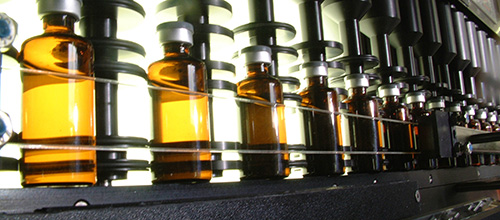New USP Chapter on Visual Inspection of Parenterals?
Recommendation

Thursday, 12 February 2026 9 .00 - 17.00 h
In the current Pharmaceutical Forum PF 47(3), a Stimuli article describes the weaknesses of the current specifications for the inspection of parenterals for particles and how these could be dealt with in a new USP chapter.
Inspection of sterile parenteral dosage forms
Sterile parenteral dosage forms must be visually inspected to 100%. On the one hand, this involves inspecting the product for foreign particles, but also defects in the entire cotainer/closure system could be detected here. Particles are one of the main reasons for recalls of sterile drugs, as well as for the issuance of Warning Letters by the US American FDA. The US, EU and Japanese pharmacopoeias provide information in several chapters (USP <790>, <1790> as well as EP 2.9.20, 5.17.2 and JP 6.08) regarding the requirements for testing. However, despite the numerous pharmacopoeia chapters, there are uncertainties on the side of the industry, gray areas and differences in the way the tests are carried out by different pharmaceutical companies. This is where the Stimuli article describes what a new USP chapter could accomplish.
The pharmacopoeia chapters mentioned above describe testing for visible particles. Testing is a probabalistic process. The probability of detecting a particle depends, among other things, on its size. The pharmacopoeias do not specify the lower limit at which a particle belongs to the visible particles. This leads to different limits at different pharmaceutical companies. The so-called 'non-visible particles' are smaller than the 'visible particles'. For these, there are separate pharmacopoeia chapters, specifications and test methods, which are carried out in the laboratory with an upper limit of about 100 µm. According to the article, this leads to a gray area between these particle types of 50-150 µm, in which particles are not reliably detected.
Other factors affecting the probability of detection include the type of particle (shape, size, material, refractive index) and humans and their level of fatigue while performing (manual) visual inspections. The definition of what constitutes a visible particle also varies from company to company.
The original pharmacopoeia methods of visual inspection were developed for "small" (chemically manufactured) molecules. In the meantime, biotherapeutics (such as antibodies) play a much larger role and with them also the so-called intrinsic particles. This refers to particles that consist of the medicinal product itself and are formed, for example, by aggregation of proteins. In some cases, the formation of these particles is reversible. The risk posed to the patient by these particles is different from that posed by extrinsic particles, i.e. particles that have entered the manufacturing process from outside (such as insect fragments). The current pharmacopoeia chapters do not address this issue sufficiently.
Contents of a new Pharmacopoeia Chapter
A new pharmacopoeia chapter should therefore contain a general definition of what a visible particle is, including a lower size specification. Also a uniform approach for the risk assessment of particles should be described. In this sense, it should also be preferable to have a commercially available standard test set of extrinsic and intrinsic particles that could be used for training manual visual inspection personnel. Of course, this is extremely difficult especially for intrinsic particles, e.g., those consisting of proteins. The National Institute of Standards and Technology (NIST) in the US has been working for several years to develop a standard that simulates protein particles. Product-specific defects or particles can of course not be included here.
Training should be standardised by means of the new chapter, among other things by using the described standard test set. It should also be specified what the minimum requirements for the initial approval of a human tester should be and how often a human tester should be requalified.
Specifications could also be adapted. The article suggests specifications that take into account the type of particle and the stage in the life cycle of a medicinal product (developmet stage or marketed).
The article strongly addresses manual visual inspection, especially in terms of training. Of course, setting a minimum size of a particle would also have implications for automated visual inspection (AVI). In any case, a helpful further specification of pharmacopoeial methods is desirable. However, perhaps a revision of the existing USP chapters on visual inspection would be even more helpful than an additional chapter. This would in any case prevent chapters from contradicting each other in terms of content.
The Good Practice Guide, which was developed by the ECA Visual Inspection Group, also provides guidance. The guide "Visual Inspection of medicinal products for parenteral use" is available free of charge after applying for a free of charge membership.




